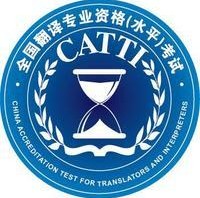Section 1 English-Chinese Translation (50 points)
Translate the following two passages into Chinese.
Passage 1
Jane Goodall was already on a London dock in March 1957 when she realized that her passport was missing. In just a few hours, she was due to depart on her first trip to Africa. A school friend had moved to a farm outside Nairobi and, knowing Goodall’s childhood dream was to live among the African wildlife, invited her to stay with the family for a while. Goodall, then 22, saved for two years to pay for her passage to Kenya: waitressing, doing secretarial work, temping at the post office in her hometown, Bournemouth, on England’s southern coast. Now all this was for naught, it seemed.
It’s hard not to wonder how subsequent events in her life — rather consequential as they have turned out to be to conservation, to science, to our sense of ourselves as a species — might have unfolded differently had someone not found her passport, along with an itinerary from Cook’s, the travel agency, folded inside, and delivered it to the Cook’s office. An agency representative, documents in hand, found her on the dock. “Incredible,” Goodall told me last month, recalling that day. “Amazing.”
Within two months of her arrival, Goodall met the paleontologist Louis Leakey — Nairobi was a small town for its white population in those days — and he immediately offered her a job at the natural-history museum where he was curator. He spent much of the next three years testing her capacity for repetitive work.
He believed in a hypothesis first put forth by Charles Darwin that humans and chimpanzees share an evolutionary ancestor. Close study of chimpanzees in the wild, he thought, might tell us something about that common progenitor. He was, in other words, looking for someone to live among Africa’s wild animals. One night, he told Goodall that he knew just the place where she could do it: Gombe Stream Chimpanzee Reserve, in the British colony of Tanganyika (now Tanzania).
In July 1960, Goodall boarded a boat and after a few hours motoring over the warm, deep waters of Lake Tanganyika, she stepped onto the pebbly beach at Gombe.
Her finding, published in Nature in 1964, that chimpanzees use tools — extracting insects from a termite mound with leaves of grass — drastically and forever altered humanity’s understanding of itself; man was no longer the natural world’s only user of tools.
After two and a half decades of living out her childhood dream, Goodall made an abrupt career shift, from scientist to conservationist.(真题来自 《纽约时报》Jane Goodall Is
Still Wild at Heart mtizt.com注)
Passage 2
Scientists have found the first evidence that briny water flowed on the surface of Mars as recently as last summer, a paper published on Monday showed, raising the possibility that the planet could support life.
Although the source and the chemistry of the water is unknown, the discovery will change scientists’ thinking about whether the planet that is most like Earth in the solar system could support present day microbial life.
The discovery was made when scientists developed a new technique to analyze chemical maps of the surface of Mars obtained by NASA’s Mars Reconnaissance Orbiter spacecraft.
They found telltale fingerprints of salts that form only in the presence of water in narrow channels cut into cliff walls throughout the planet’s equatorial region.
The slopes appear during the warm summer months on Mars, then vanish when the temperatures drop. Scientists suspected the streaks were cut by flowing water, but previously had been unable to make the measurements.
Mars Reconnaissance Orbiter makes its measurements during the hottest part of the Martian day, so scientists believed any traces of water, or fingerprints from hydrated minerals, would have evaporated.
Also, the chemical-sensing instrument on the orbiting spacecraft cannot home in on details as small as the narrow streaks, which typically are less than 16 feet wide.
But Ojha and colleagues created a computer program that could scrutinize individual pixels. That data was then correlated with high-resolution images of the streaks. Scientists concentrated on the widest streaks and came up with a 100 percent match between their locations and detections of hydrated salts.
NASA’s ongoing Mars rover Curiosity has found evidence that Mars had all the ingredients and suitable habitats for microbial life to exist at some point in its past.(选自《路透社》CORRECTED-Evidence found of summertime water flows on Mars – study mtizt.com注)
Section 2 Chinese-English Translation (50 points)
Translate the following two passages into English.
Passage 1
人口问题归根结底是发展问题。我们要关注人口增长与经济社会发展的关系,统筹解决好人口数量、素质、结构和分布问题。我们要重点关注人口分布结构与社会经济发展的关系,把人口问题纳入到国家经济社会发展规划
人口流动和家庭结构变化将对公共服务和社会治理带来挑战。大规模的人口流动成为推动社会变迁的主要力量,同时也加快了家庭的小型化、多样化、离散化。
我们要大力推进流动人口基本公共服务均等化,着力提升流动人口服务管理水平,确保流动人口公平公正地享受城镇公共资源和社会福利,全面参与政治、经济、社会和文化生活,实现经济立足、身份认同和文化交融。(第二段选自新闻报道国家卫计委:“一带一路”战略将影响人口分布 mtizt.com注)
Passage 2
本美术馆是以收藏、研究、展示中国近现代至当代艺术家作品为重点的国家艺术博物馆,是新中国成立以后的国家文化标志性建筑。主体大楼为仿古阁楼式,黄色琉璃瓦大屋顶,四周廊榭围绕,具有鲜明的民族建筑风格。主楼建筑面积18000多平方米 ,共有17个展览厅,展览总面积8300平方米。
本美术馆现收藏各类美术作品10万余件,以19世纪末至今中国艺术名家和各时期代表作品为主,兼有部分古代书画和外国艺术作品,同时也包括丰富的民间美术作品。
建馆以来,本美术馆已举办数千场具有影响的各类美术展览,也成为中国与国际艺术交流的重要平台。本美术馆也注重通过网站及“数字美术馆”项目建设延展公众服务内容和手段,网站3次改版,建成10多个美术数据库,日益成为美术信息发布、检索与共享平台。(选自中国美术馆官网简介 mtizt.com注)
参考译文:
真题来自gocatti CATTI二级笔译实务真题及答案下载:百度云(稍后)

参考答案快出来啊
二笔的英文参考答案有吗
你好